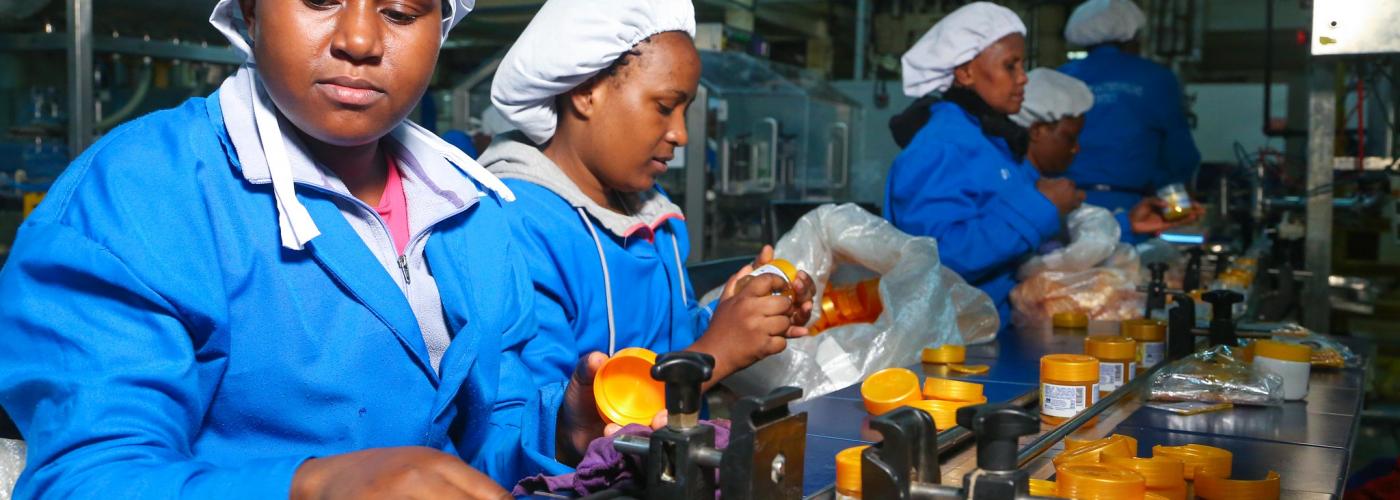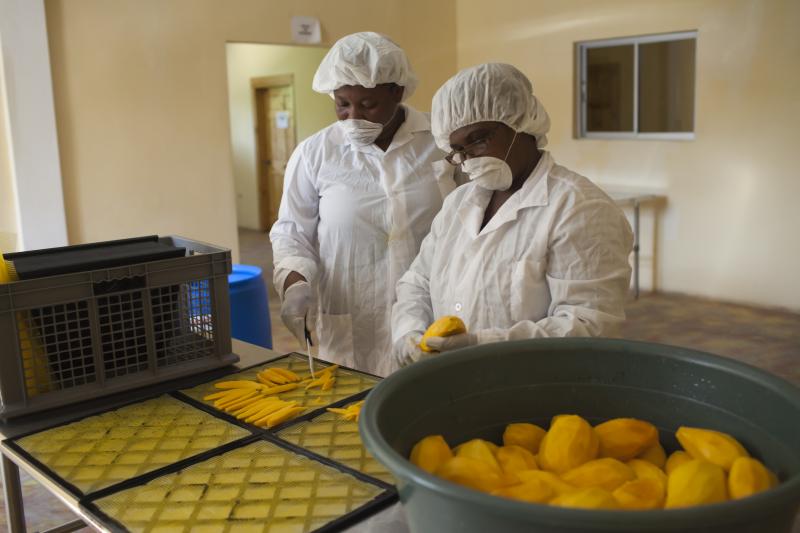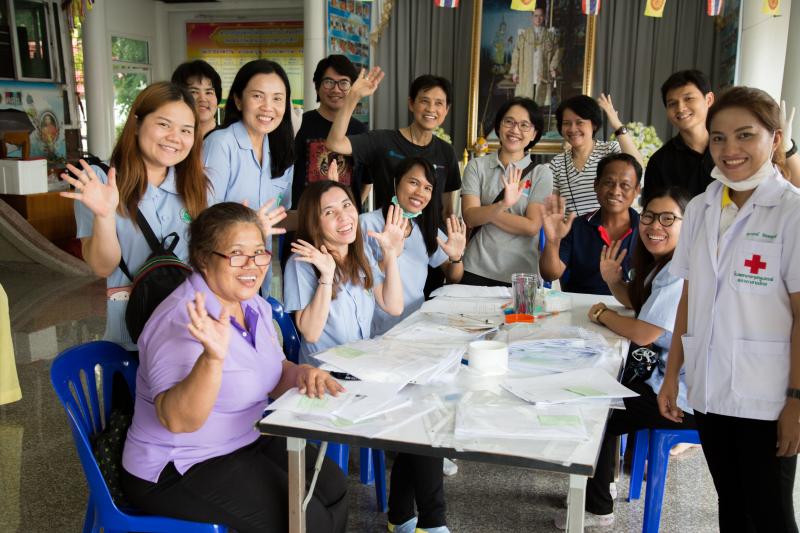Considering a Regional Investment Strategy to Drive Development in Higher-Risk Countries
Image

By Emily Langhorne, INVEST Communications Specialist
In providing advice on investing for beginners, the U.S. Securities and Exchange Commission explains the concept of diversification by using a simple maxim: don’t put all your eggs in one basket.
For personal investment, diversification means investing money in different asset categories—stocks, bonds, real estate, etc.—and spreading investment around within those categories, such as having a stock portfolio that invests in a range of companies from different sectors. A diversified portfolio makes it possible for investors to pursue different types of opportunities and reduce the risk of losing money. For further protection, investors often choose assets in each category that perform differently under different market conditions. For instance, during COVID-19, gains from investments in personal technology companies may have helped investors offset losses from investments in hotels and airlines.
The value of diversification isn’t just limited to personal investment portfolios. Large investors such as pension funds and insurance companies also need diversification. These organizations must balance the need to meet their obligations via high returns—often associated with riskier investments—with their fiduciary responsibility to make investments that protect their stakeholders’ capital.
Because emerging markets tend to have high rates of return and are often uncorrelated with developed markets, investments in these markets can be a diversification strategy for investors, and private investors are increasingly looking at these markets for new opportunities. Often, the effects of these investments align with USAID’s development objectives because they improve the lives of people living in these regions. For instance, increased investment into local businesses can make services accessible to more people and create jobs that enable people to move out of poverty. USAID can play an important role in de-risking investments in emerging markets, thereby mobilizing private capital into high-impact areas.
While investing in emerging markets is a diversification strategy, diversification across different emerging markets is also an important aspect of risk-mitigation for investors. When seeking to increase private capital flows into their markets, USAID Missions should consider a regional investment approach.
“A regional investment strategy can be a simple, powerful way for Missions to help the private sector manage risk and thereby create greater investment demand in their countries,” explains Cameron Khosrowshahi, the USAID Investment Officer who oversees the INVEST initiative. “In countries with small markets and high perceived risk, Missions can position themselves as part of a larger and more diversified portfolio for investors. This approach can require a mindset shift for bi-lateral Mission staff, who are traditionally laser-focused on one country. However, by using their development dollars in a way that benefits a whole region, a Mission can actually attract more investment because investors are drawn to the diversification and scale of a regional market.”
“Working hand-in-hand with regional colleagues is an important strategy for mobilizing investment,” adds Sashi Jayatileke, Development Finance Team Lead at USAID. “It’s different from the traditional approach to development projects, which has often been bilateral rather than regional, but when it comes to investment, a regional approach can increase the likelihood of successful transactions being made. With a regional approach, Missions can overcome country-level constraints by driving some dollars into other markets as well as their own.”
However, pursuing a regional investment strategy also requires thinking about investment destinations from a private-sector perspective. The natural grouping of countries for a private sector investment portfolio may differ from the countries that USAID traditionally groups together as a geographic region. Missions that are flexible in assembling group members can be more successful, understanding that from an investment perspective the country next door might not be the appropriate partner.
“The regional groupings that the private sector creates don’t necessarily fit into USAID’s traditional regional structures,” explains Kristi Ragan, INVEST’s Chief of Party. “The private sector instead determines a regional grouping that aligns with their own pragmatic, market-driven needs, creating pathways for sustainable investment strategies that mitigate risk.”
Through its work with members of the USAID Finance and Investment Network, INVEST has been piloting innovative regional approaches for mobilizing private capital into emerging markets. From Haiti to Southern Africa and South East Asia, these activities are showing the benefits of thinking regionally.
USAID Haiti: Targeting the Diaspora Using a Regional Investment Strategy
After years of economic struggle, Haiti remains the poorest country in the Western Hemisphere. As of 2012, more than 50 percent of the population lived on less than $2.41 a day, and in 2018 approximately 14 percent of Haitians were unemployed.
Small and medium-sized enterprises (SMEs) create jobs and spur economic development. Developing an ecosystem of SMEs throughout Haiti could greatly increase the quality of life and economic opportunities available for Haitians. Unfortunately, SMEs in Haiti face many challenges when trying to access capital locally, and attracting external capital is equally challenging given the high-risk climate for businesses operating in Haiti.
USAID Haiti and INVEST aim to help Haitian SMEs access financing for growth. In 2019, INVEST partnered with Delphin Investments to host an investment roadshow in the United States and Canada to determine whether the Haitian diaspora would be interested in investing in SMEs back home. About 2 million Haitians live outside of Haiti, and in 2019, personal remittances to Haiti made up 38.5 percent of the country’s GDP.
From the roadshow events, INVEST learned that members of the diaspora did have an interest in investing in Haiti beyond remittances. However, they had no method for doing so. In the U.S., there are many financial vehicles, such as mutual funds, that create structured pathways for investments in multiple companies at a time. In Haiti, such vehicles are not available, and investing directly in a company is risky and not realistic for most people.
After the roadshow concluded, INVEST released a request for proposals that asked bidding firms to outline strategies for structuring a vehicle that would enable overseas investors to invest in a portfolio of Haitian SMEs. Delphin Investments responded with a proposal suggesting the creation of a pan-Caribbean fund, with specific allocations to countries across the region including Haiti.
With USAID covering the setup costs and providing logistical support, Delphin Investments launched the pan-Caribbean fund in late 2020. It will invest in a portfolio of SMEs across Haiti and the Caribbean, and it will create liquidity and awareness for Haiti and the region in general.
By opting to fund the creation of a regional mechanism, USAID Haiti has situated the country inside a portfolio that is more appealing and less risky for investors than an investment opportunity focused on Haiti alone. This regional approach increases the likelihood that the fund will raise capital, and with a successful capital raise, it can channel money into Haitian SMEs, thereby creating jobs, increasing incomes, and expanding the services and products available throughout the country.
USAID Southern Africa: Using a Regional Approach to Drive Venture Capital into African Startups
Image

While investors have been increasingly turning their attention to Africa, many have only shown an interest in growth-stage companies. To reach the growth stage, however, companies need early financial support, known as seed funding. Seed funding helps early-stage companies hire staff, perform market research, and develop products and services. The scarcity of seed funding throughout Africa creates a serious problem for start-ups and entrepreneurs.
Working with INVEST and USAID Southern Africa’s Regional Mission in support of the Prosper Africa initiative, Lion’s Head Global Partners (LHGP), a leading investment bank providing financial advisory services across emerging markets, is supporting Founders Factory Africa (FFA)’s Seed Fund, a new vehicle focused on filling the continent’s seed funding gap. FFA is a South Africa-based incubator that supplies African entrepreneurs with a combination of capital and technical assistance to mitigate the risks associated with the early stages of business ventures.
The Seed Fund seeks to attract venture capital (VC) investments for start-ups throughout Africa. Its primary audience is international investors, and it aims to have 50 percent of the targeted $15 million capital raise coming from U.S. investors. LHGP is helping FFA structure a fund that matches both market need and investor appetite and will assist in the subsequent fund raise.
To date, most of the flows of VC into Africa have been concentrated in a few key markets. In 2019, Kenya and Nigeria combined accounted for more than 65 percent of the continent’s VC flows. Egypt and South Africa followed, receiving almost 21 percent of flows, and all the continent’s remaining countries divided the other approximately 13 percent of VC flows. That information should come as no surprise to investors: Kenya, Nigeria, Egypt, and South Africa are Africa’s key investment hubs.
FFA’s current portfolio of start-up companies is largely reflective of these VC investment trends, with five companies located in Nigeria and three in Kenya. However, the portfolio also includes six companies located in South Africa, two in Ghana, and one in Uganda.
With the Seed Fund, FFA intends to expand its support of companies across Sub-Saharan Africa. The fund aims to have fifty percent of portfolio companies based in Southern Africa—including countries other than South Africa—and the remainder spread across East, Central, and West Africa. As a result, the Seed Fund will use the broader investment mandate to help balance out VC investment across Africa.
By opting to support a fund with approximately 50 percent allocation to the continent’s other regions, USAID’s Southern Africa Regional Mission is ensuring that the Seed Fund remains valuable and attractive to international investors through a diversified portfolio that has coverage in the continent’s key investment hubs. Through this balanced selling point, it is helping to drive a relatively new form of much needed early-stage capital into countries across Southern Africa where it would not otherwise flow because singular investments in these markets would not align with the risk appetites of most investors. As a result, this pan-African approach will help build and strengthen the start-up environment throughout Southern Africa.
USAID’s Office of Gender Equality and Women’s Empowerment: Using a Regional Investment Strategy to Empower Women Economically in Southeast Asia
Image

USAID’s Office of Gender Equality and Women’s Empowerment engaged INVEST to test the hypothesis that investing for gender balance and equity leads to greater returns on investment while contributing to women’s economic empowerment. Ultimately, USAID hopes to increase the flow of capital into gender-smart businesses and the use and quality of gender-lens strategies among both investors and within portfolio companies.
With these goals in mind, INVEST and USAID decided to support the CARE-SheTrades Impact Fund (CSIF). The CSIF was launched in 2018 by CARE Enterprises, an international social justice non-profit; Bamboo Capital Partners, an impact investing platform that works with emerging market businesses serving the needs of low- and middle-income populations; and the International Trade Centre’s SheTrades Initiative.
The sector-agnostic, $75 million fund will invest in a portfolio of 15-20 growth-stage companies that meet its financial and impact requirements. CARE and Bamboo Capital Partners will provide these companies with tailored gender-smart technical assistance to ensure that they meet their financial goals while simultaneously employing practices, policies, and management strategies that empower women.
USAID is supporting the CSIF in raising $50 million by contributing $500,000 in first-loss capital, which will be paid out to the fund in three installments upon the completion of different fundraising milestones. USAID is also funding the establishment of the CSIF’s sidecar facility, which will provide bespoke technical assistance to portfolio companies, helping them to both improve their business operations and implement gender-smart practices.
In designing the CSIF, CARE and Bamboo Capital Partners opted to target companies throughout both South and Southeast Asia, with Indonesia, Philippines, Vietnam, Cambodia, Myanmar, and Bangladesh as focus countries.
Overall, South and Southeast Asia are attractive regions for investors: they offer political stability and good macroeconomic trends. Many investors consider the region a unified market, and it has hundreds of promising enterprises with well-developed revenue models seeking investment, many of which are impact oriented. However, Bamboo Partners has found that investment portfolios that include multiple countries as opposed to only one country offer risk mitigation and are more appealing to investors.
Beyond investment appeal, the regional grouping of the CSIF means that the fund can also address root problems commonly shared by countries throughout South and Southeast Asia. Despite the rapid economic growth in these regions, 36 million residents live below the international poverty line. Poor women often face undignified employment options, and when compared to men, women overall are more likely to work low-wage jobs and less likely to own property or have access to finance. Of the more than $12 billion of impact capital deployed in Asia over the last 12 years, only 3 percent was designated for gender-lens impact, meaning there is a vital need for investment in companies dedicated to addressing gender imbalances.
By supporting the CSIF, USAID has chosen to support a fund that will be attractive to investors and has the potential to catalyze long-term investments that create positive outcomes for women throughout South and Southeast Asia. Through this work, USAID can address historically unfair barriers and power dynamics that have hindered the economic empowerment of women and replace them with gender-smart outcomes that advance the position of disadvantaged women throughout the region.

